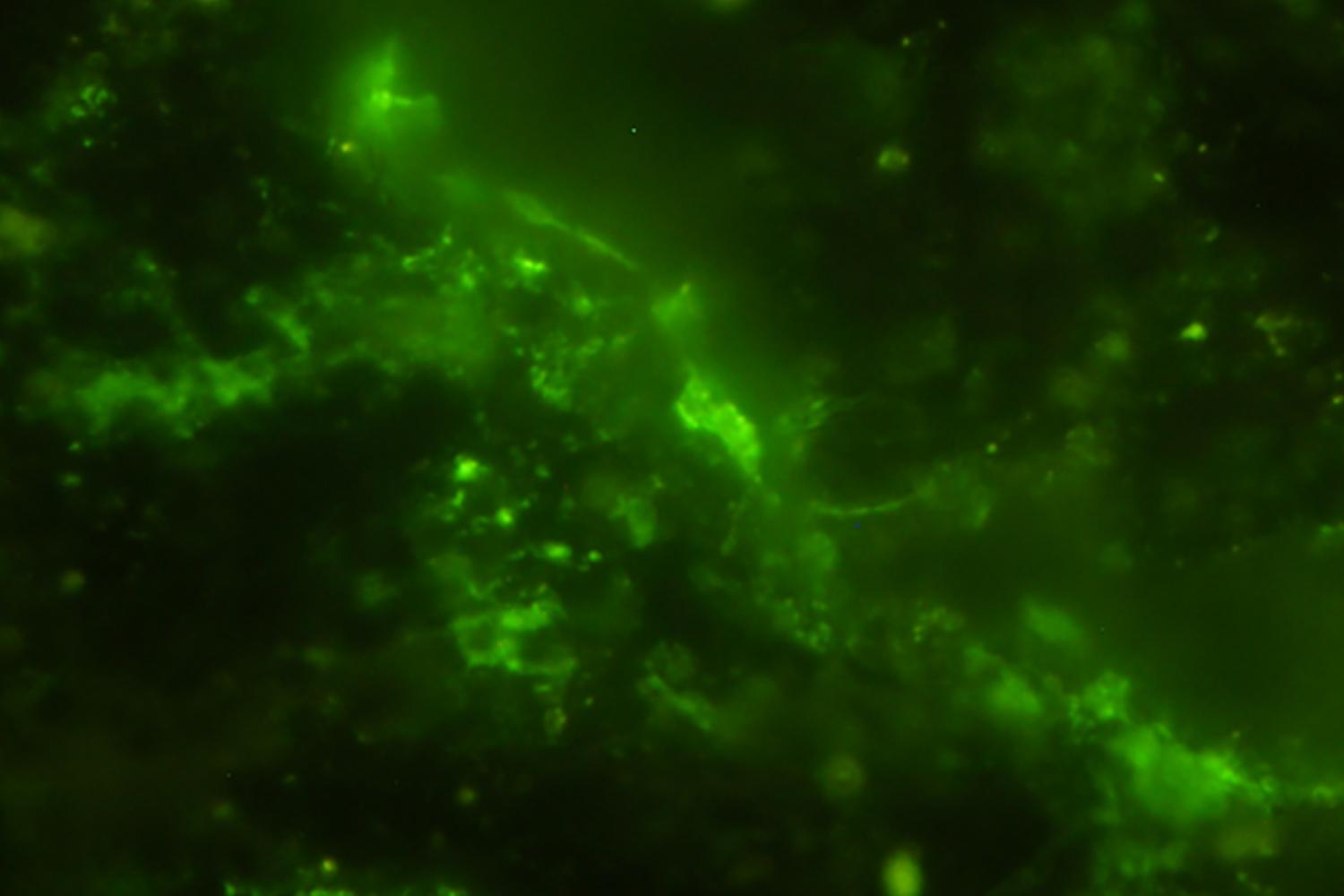After having exhumed a rock over two billion years old, a team of Japanese researchers had the immense surprise to note that it contained a population of living microorganisms. A real scientific treasure that could open new fascinating research avenues.
The object in question is from the Igne of Bushveld (CIB), an area located in northern South Africa which is known for its exceptionally rich mineral deposits. For the anecdote, more than 70 % of the world’s platinum comes from this region about as extensive as Ireland.
This profusion of resources is directly linked to the geological history of the CIB. About two billion years ago, violent volcanic episodes injected an immense volume of lava loaded with iron and magnesium into the continental crust, forming a large geologically distinct layer. This trapped equipment then started to cool slowly, leading to the appearance of many cracks.
This is a very important point in the context of this work, because these ruptures allow water to circulate and constitute potential shelters for microorganisms. Add to that the fact that the CIB is rich in sulfur minerals, and you get a chemically dynamic environment which, in theory, could be conducive to the proliferation of many microscopic life forms. An exciting perspective for researchers, and for good reason: so far, no form of life has never been found in rocks over 100 million years old.
With the help of the International Continental Scientific Drilling Program, a non -profit organization that finances the exploration of geological sites, researchers from the University of Tokyo therefore sought to verify this hypothesis. 15 meters below the surface, they removed a sample about thirty centimeters long which granted all their wishes. By examining the fractures of the rock, the authors of the study have noted that they actually contained heaps of microbes all that is most alive.
Native microbes without trace of contamination
But before screaming victory, it was still necessary to confirm their origin. Since the CIB is constantly exploited by the mining industry, it was quite possible that the presence of these microorganisms results from a Contamination by a drilling system.
Fortunately, it turns out that this same team had already developed a technique specifically designed to reconstruct the story of a microbial strain on the basis of its DNA. Thanks to this tool, the researchers were able to confirm that these were indeed native microbes: Everything indicates that they have proliferated in these fractures, completely isolated from the outdoor environment for hundreds of millions of years. A spectacular discovery that could force us to reconsider whole sections of the evolution of life on earth.
« It is a very exciting discovery “Rejoices Yohei Suzuki, principal author of the study, in a university statement. “” By studying DNA and microbes genomes like these, we may be able to understand the evolution of very primitive life on Earth He explains.
He also took the opportunity to mention another point which makes this discovery even more interesting. Indeed, the Martian Rover Perseverence is currently taking rock samples about as old as that of the CIB. Since we now know that life forms are able to proliferate in this kind of environment, There is something to be optimistic about finding at least a few traces in Martian samples.
« Discovering a microbial life in samples of the land dating from 2 billion years ago and being able to confirm their authenticity with precision makes me enthusiastic about what we could now find in samples of March “Concludes Suzuki.
The study text is available here.
🟣 To not miss any news on the Geek newspaper, subscribe to Google News and on our WhatsApp. And if you love us, .












